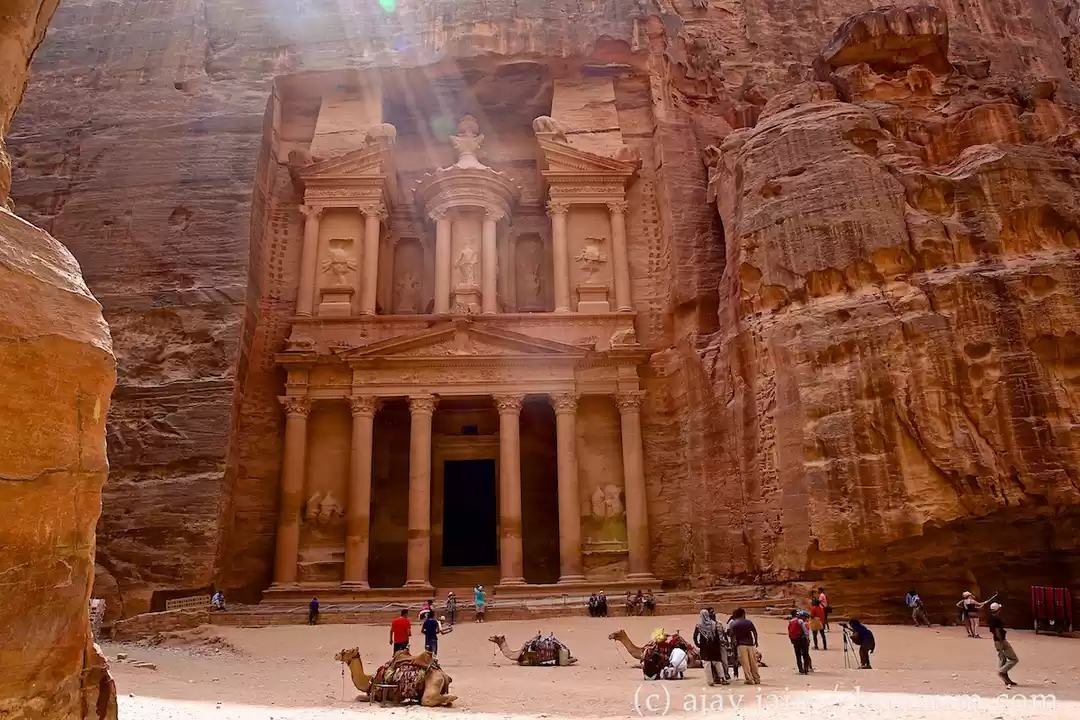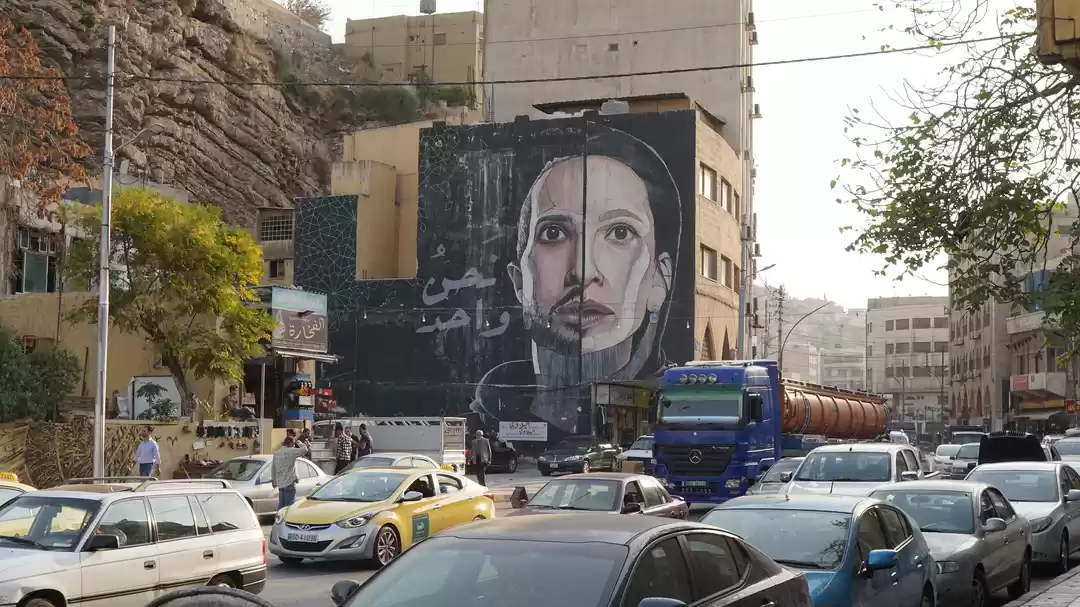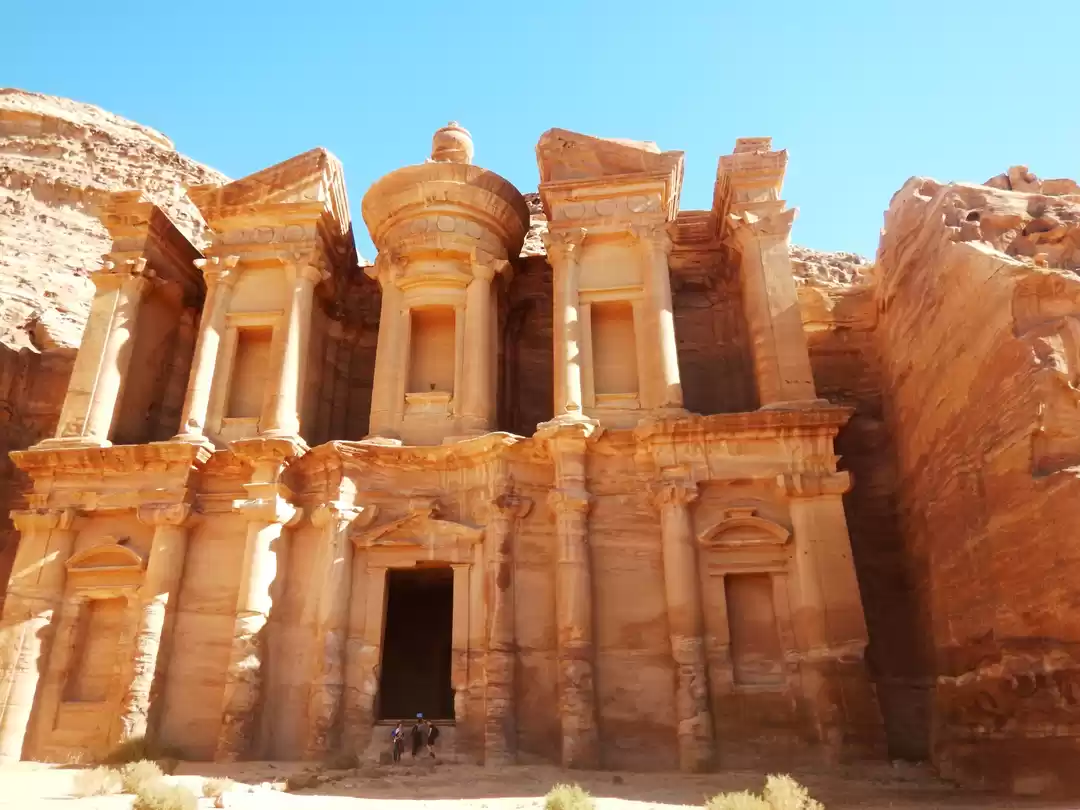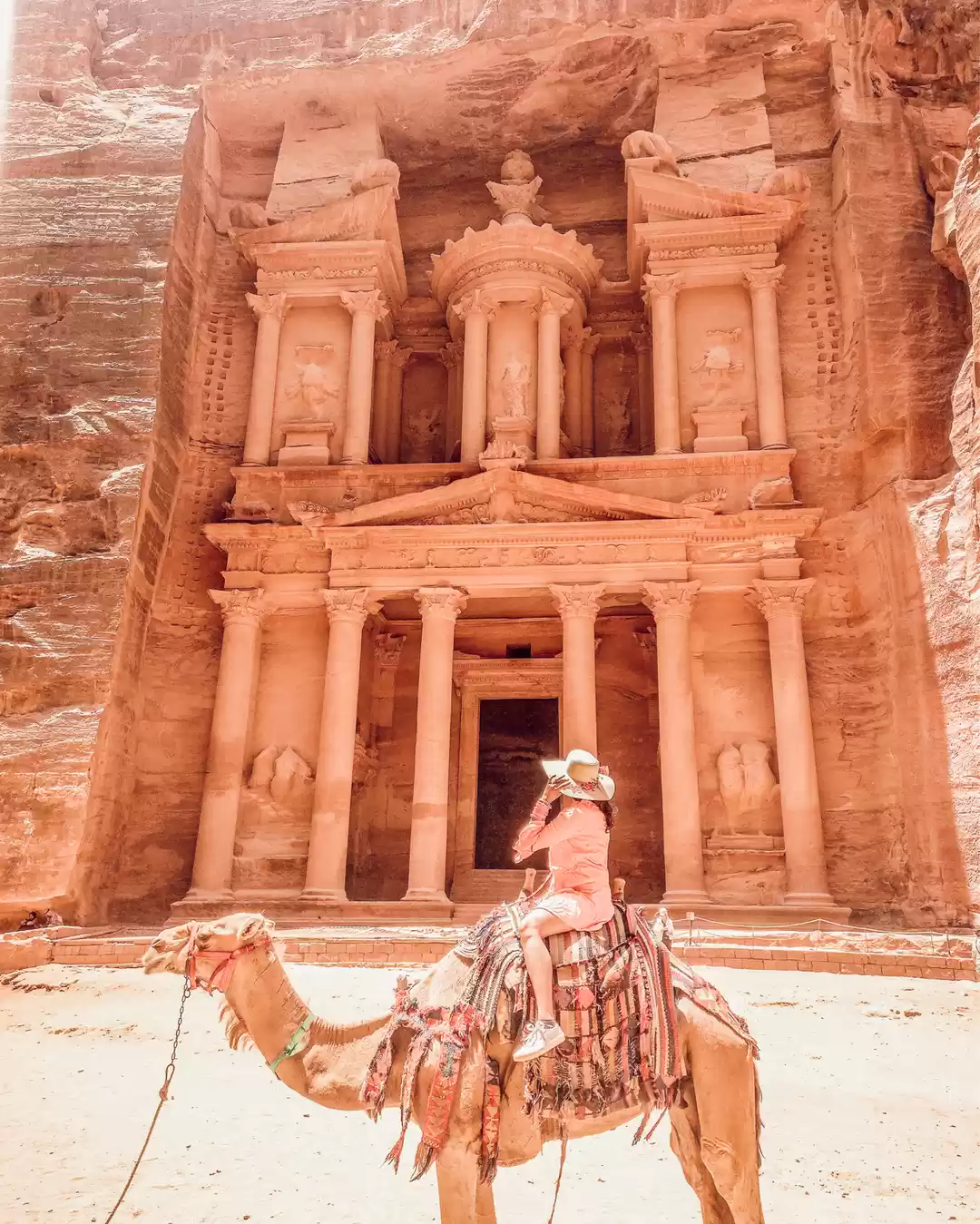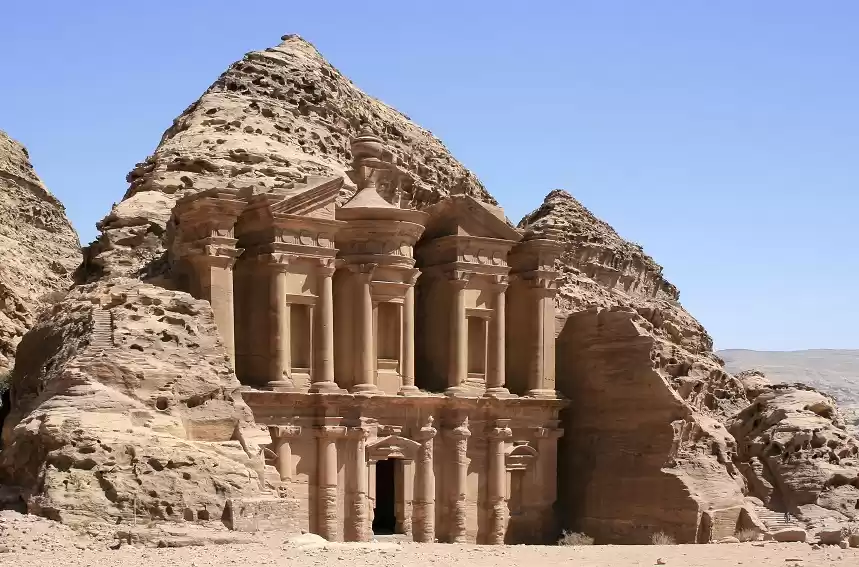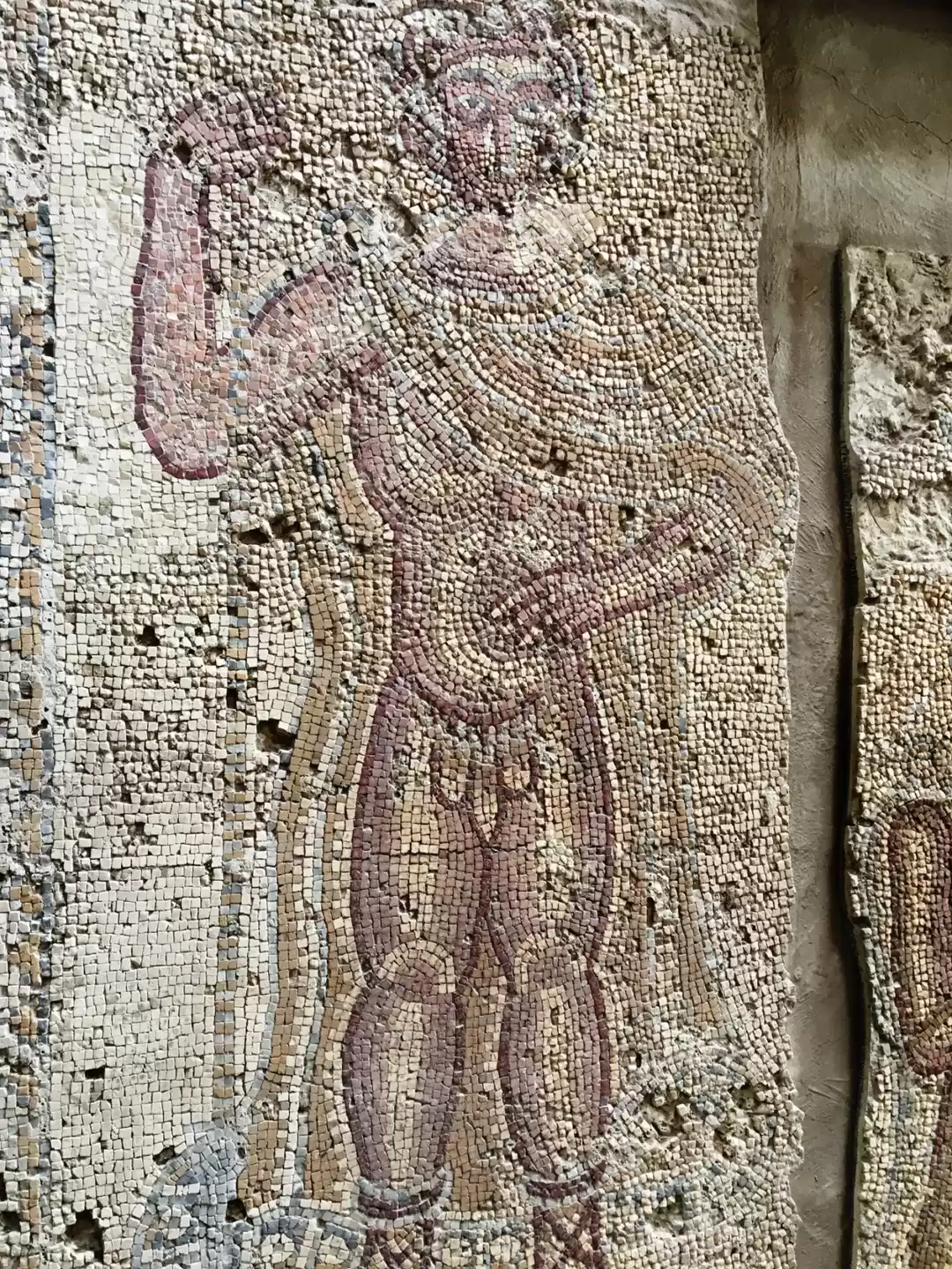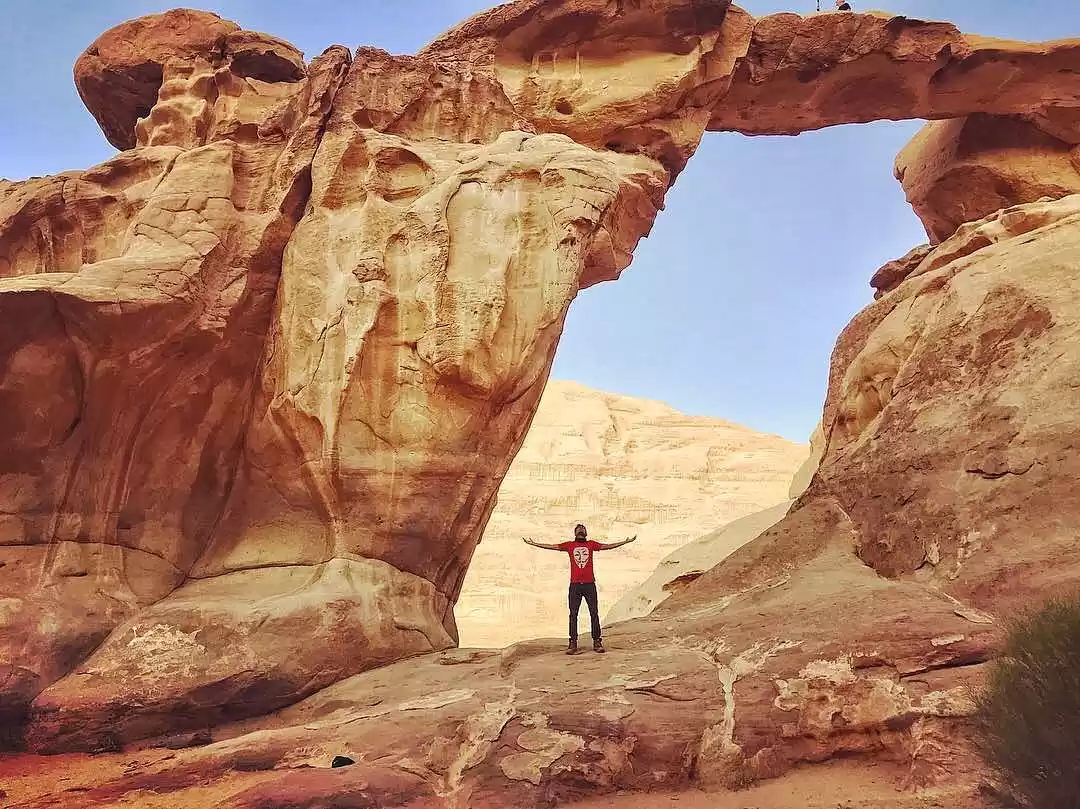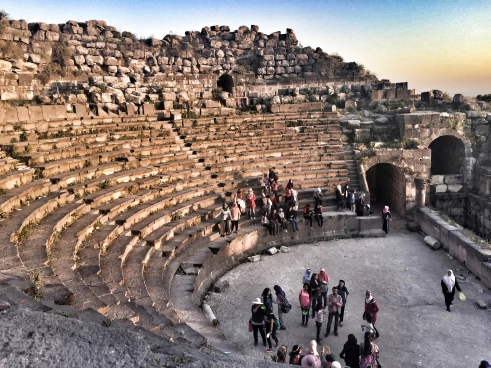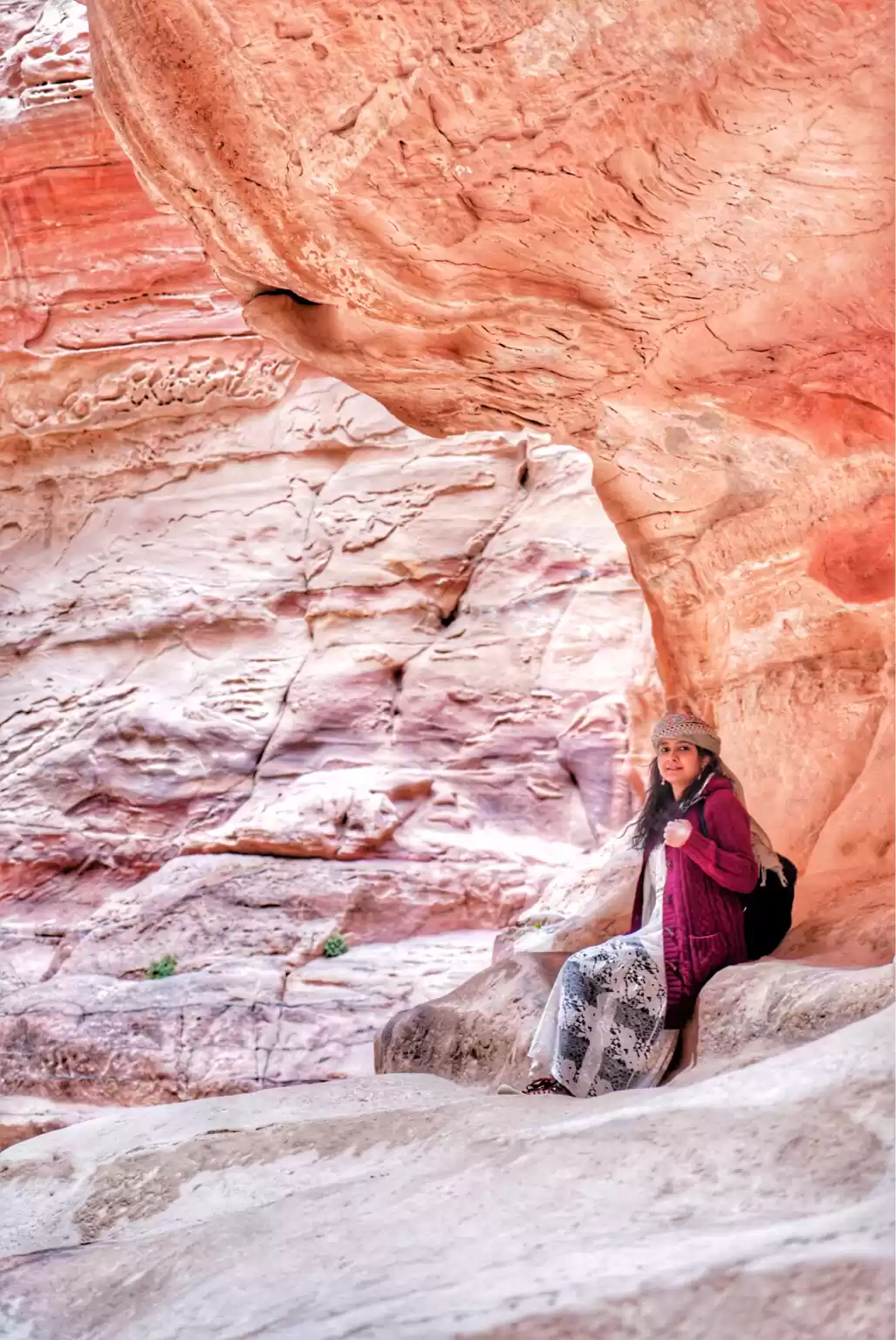
I’d been to Jordan twelve years ago with a Christian group headed for the Holy Land. Quite predictably the tours were only to Mount Nebo, Madaba, Bethany Beyond the Jordan (the baptism site of Jesus Christ), and the capital Amman. I was sorely disappointed that Petra had been bypassed so I made up my mind to return. But Fate willed that I had to wait a dozen years. I’ve no regrets because I made it at last in November 2018. This time it was with my friend Tanuja - just the two of us lone ladies at our own pace and convenience. It turned out to be a safe and delightful trip.
We landed at the capital city of Amman. From Queen Alia International Airport we took a taxi to our hotel, Le Grand Amman, which is located in downtown Amman. We paid 22 JOD without haggling. Dinner and rest at the hotel, and the next morning we were out after breakfast, heading to the Citadel to view the crumbling ruins of ancient Roman fortifications.
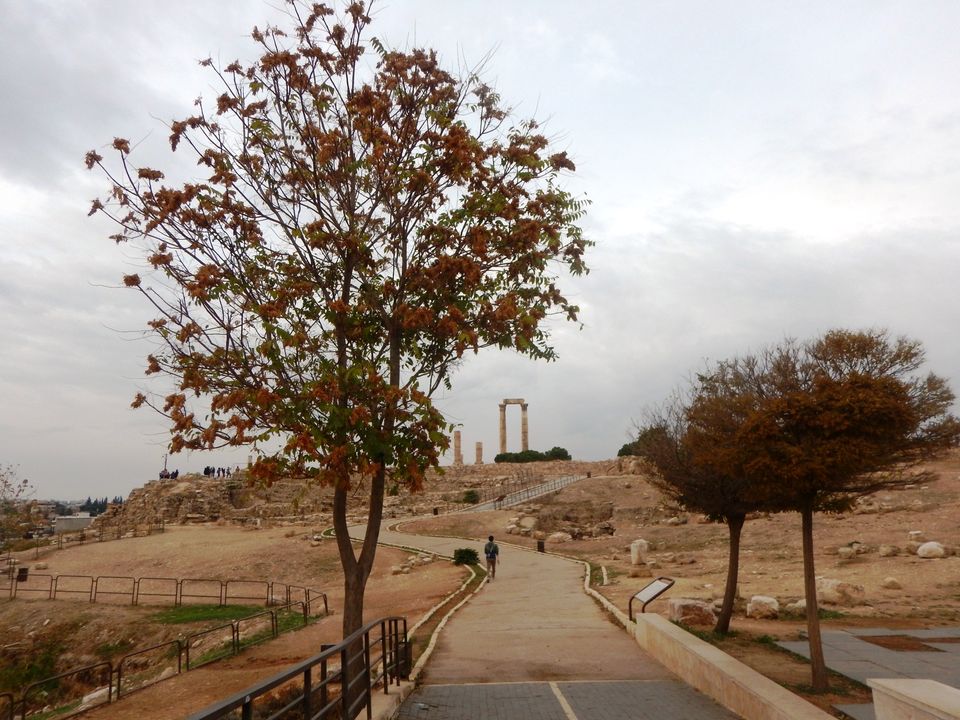
People have lived here since 8500 B.C.E. and as such Amman, like Jericho in Palestine, is one of the oldest continuously inhabited cities of the world. The Assyrians, the Persians, the Greeks, the Romans and the Ottomans had all occupied it in turn. Today nearly half of Jordan’s population lives in the Amman area. The most fertile part of the country is the Jordan Valley in the west, where the River Jordan flows into the Dead Sea.
Amman was known as Rabbath Ammon in the 13th century B.C.E. when the Ammonites inhabited the area. It was located on the ancient King’s Highway, the trade route between Egypt, Syria, Anatolia (Turkey) and Mesopotamia (Iraq). It was precisely this road we took to travel to Petra two days later.
When the Greeks came along they rebuilt Amman and called it Philadelphia after Ptolemy II Philadelphus. They also built new cities at Jerash and Umm Qais. The Romans dominated the region for four centuries from 63 B.C.E. In 106 AD the emperor Trajan built a road from Ayla (Aqaba) through Amman to Damascus in Syria.
The Islamic era in the Levant began in the 630s and Philadelphia was renamed Amman. The city suffered centuries of neglect and a series of earthquakes, and was eventually resettled in the late 19th century, soon becoming a commercial hub. The Ottomans built the Hejaz Railway between Medina and Damascus. In the early 20th century came World War I, the British Mandate and the Arab Revolt.
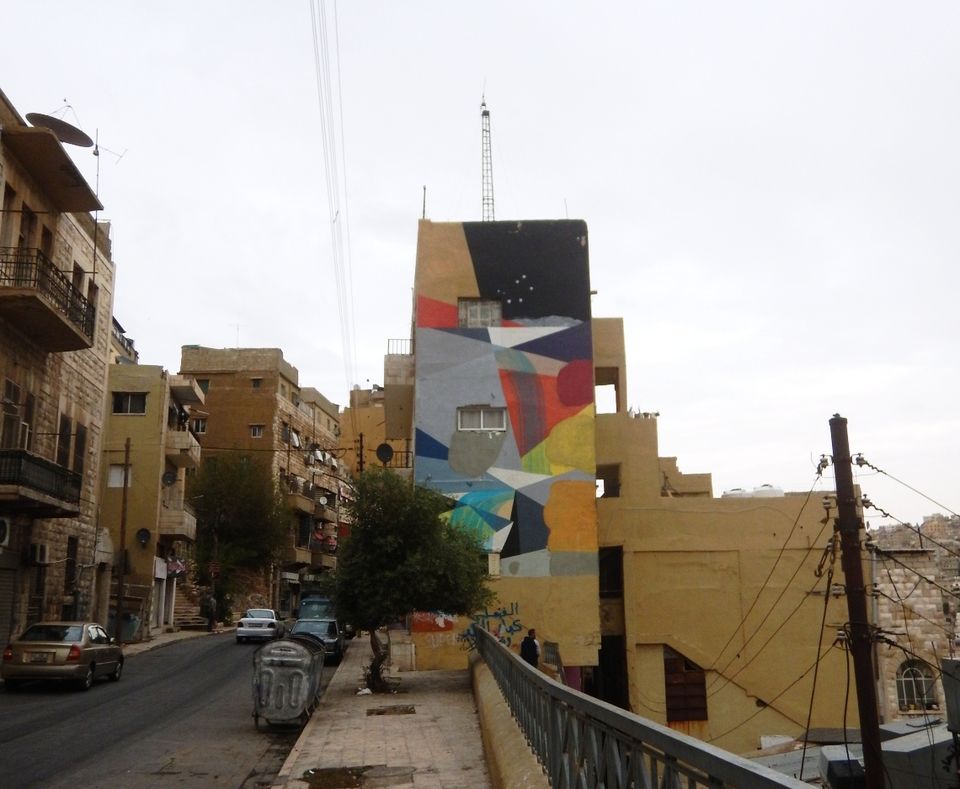
Amman in 1879 had hardly 500 residents. The population rose to 10,000 in the 1930s and now hovers in the region of 40 lakhs. Jordan as a whole has multitudes of refuges from Syria, Palestine and Iraq.
On the outskirts of Amman a Neolithic site dates back to 7250 B.C.E. and yielded the Ain Ghazal statutes (32 figures in all) that are now on display at the Jordan Museum. They are among the oldest statues in the world.
The Amman Citadel is a magnificent ruin with traces of the Temple of Hercules and a spectacular view of the Roman Theatre and the entire city. The Ummayad Palace on the hilltop was built around 800 A.D.
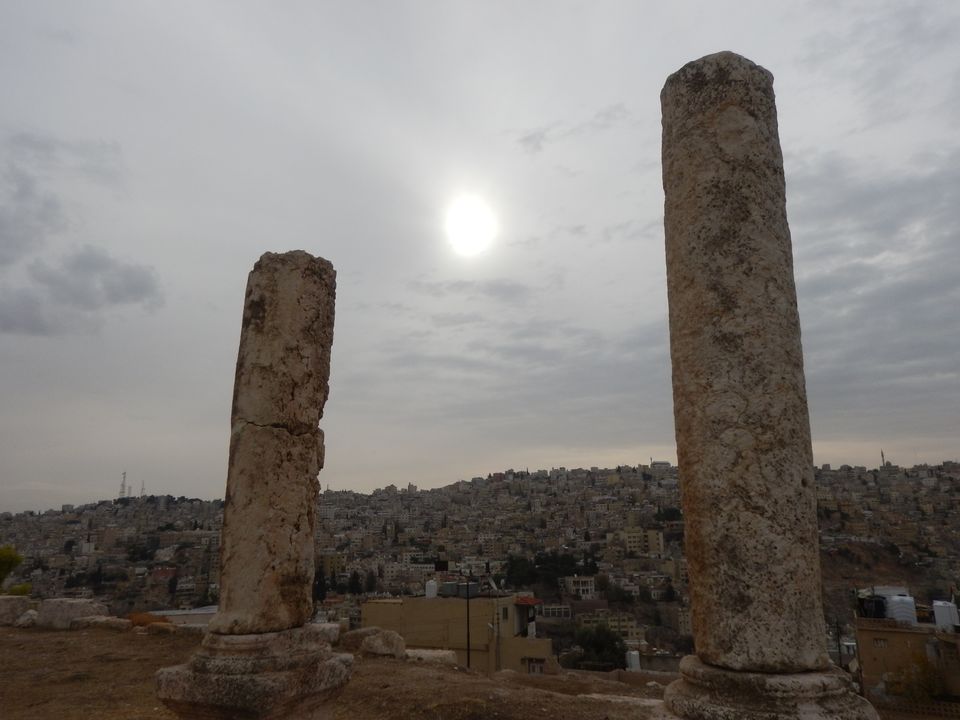
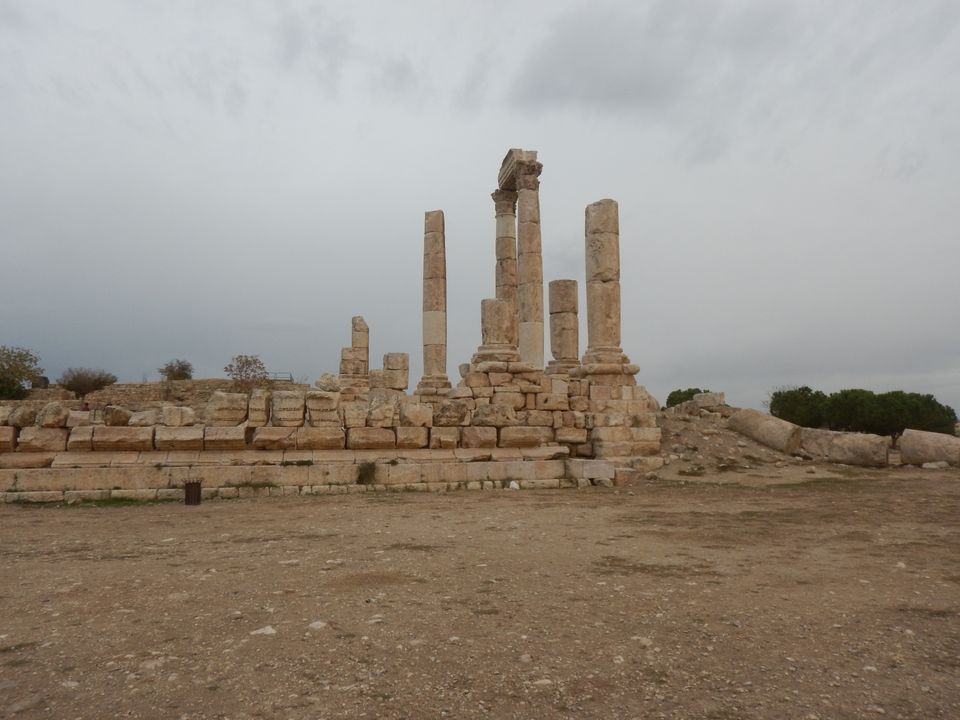
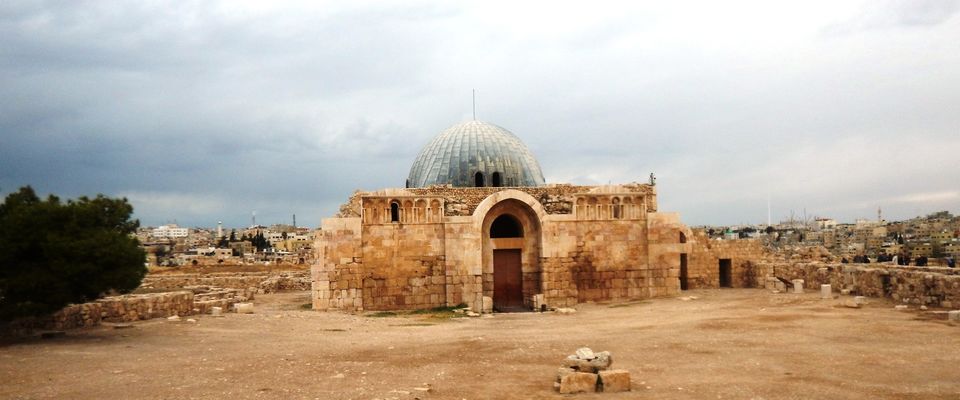
The National Archaeological Museum is not to be missed. Some of the exhibits are really, really ancient. The Ain Ghazal statues, Nabatean pottery, a copy of the Mesha stele, primitive weapons, preserved skulls from Jericho and rhino parts that are more than 200,000 years old, add to the fascination of the place. It’s a small museum which can be covered in 30 minutes or less, so don’t pass it.




The original Mesha Stele (inscribed stone) also known as the Moabite Stone sits in the Louvre Museum in Paris and Jordan is now demanding its return. Inscribed around 840 B.C.E. by King Mesha of Moab it recounts how the Moabites were able to throw off the yoke of Israel. It also mentions the Israelite god Yahweh, perhaps the earliest extra-Biblical reference.
The Roman Theatre, located in downtown Amman, was built in the second century during the reign of Antonius Pius to house 6000 spectators. The small Odeon by the side (capacity 500) is still used today to host small events. The Nymphaeum was once Philadelphia’s major fountain.
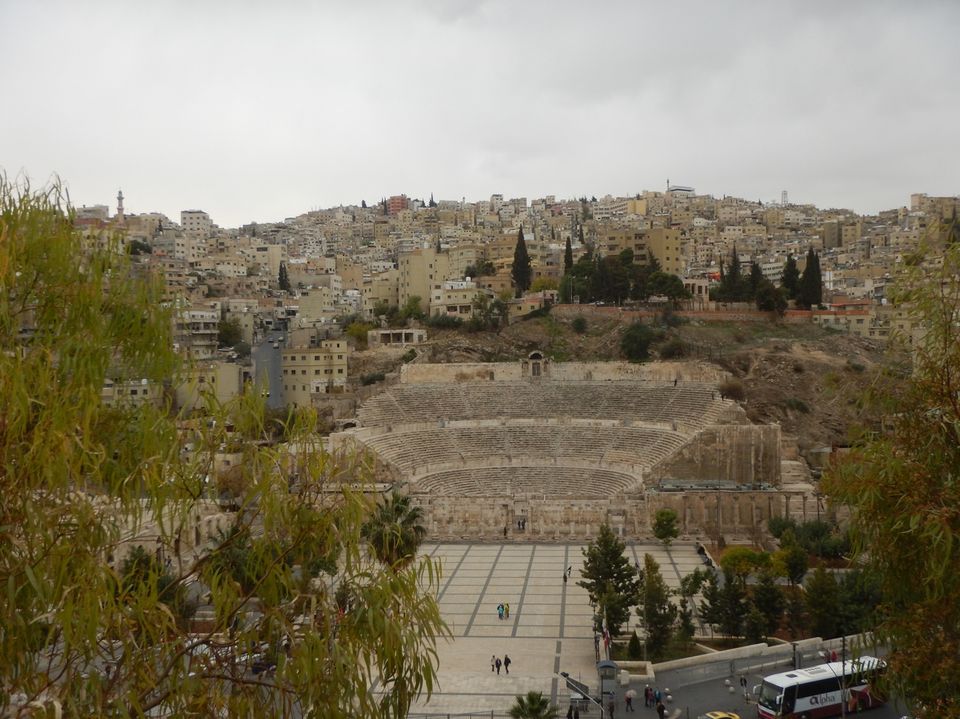
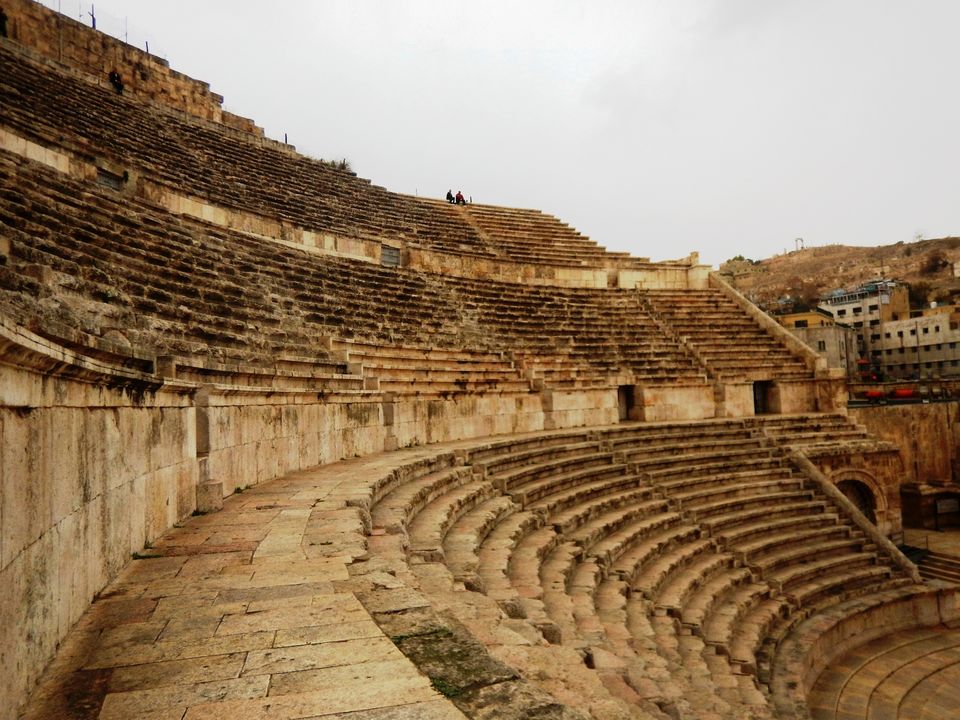
A slight drizzle prevented us from spending too much time at the Theatre or climbing too high. We went into the Museum of Popular Tradition to escape the rain and take a look at the costume and jewellery collections.


The Al Husseini mosque is open only to Muslims, so our cabbie took us to another mosque to give us a taste of the ambience, and the blessings of Allah. We had to wear the mandatory abhaya to be allowed entry. I sat on the floor for a while and closed my eyes.
As we were leaving the mosque the driver asked me, “Are you a Muslim?” I said “No, I’m a Hindu.” He had a puzzled look. Then he said, “You have a big heart.” I couldn’t possibly have told him I had enough place in my heart for 33 crore gods and one or two more could well be accommodated.
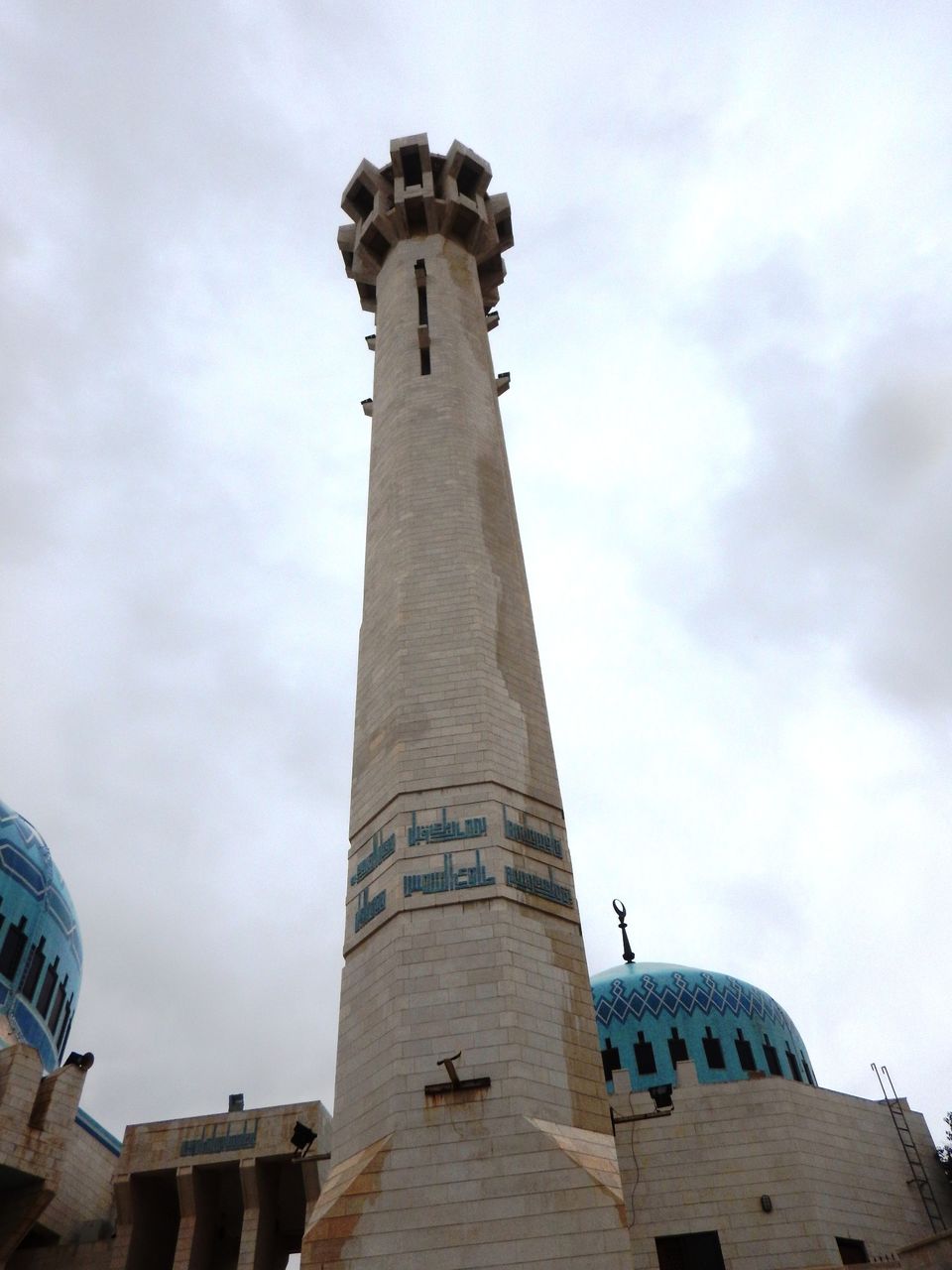
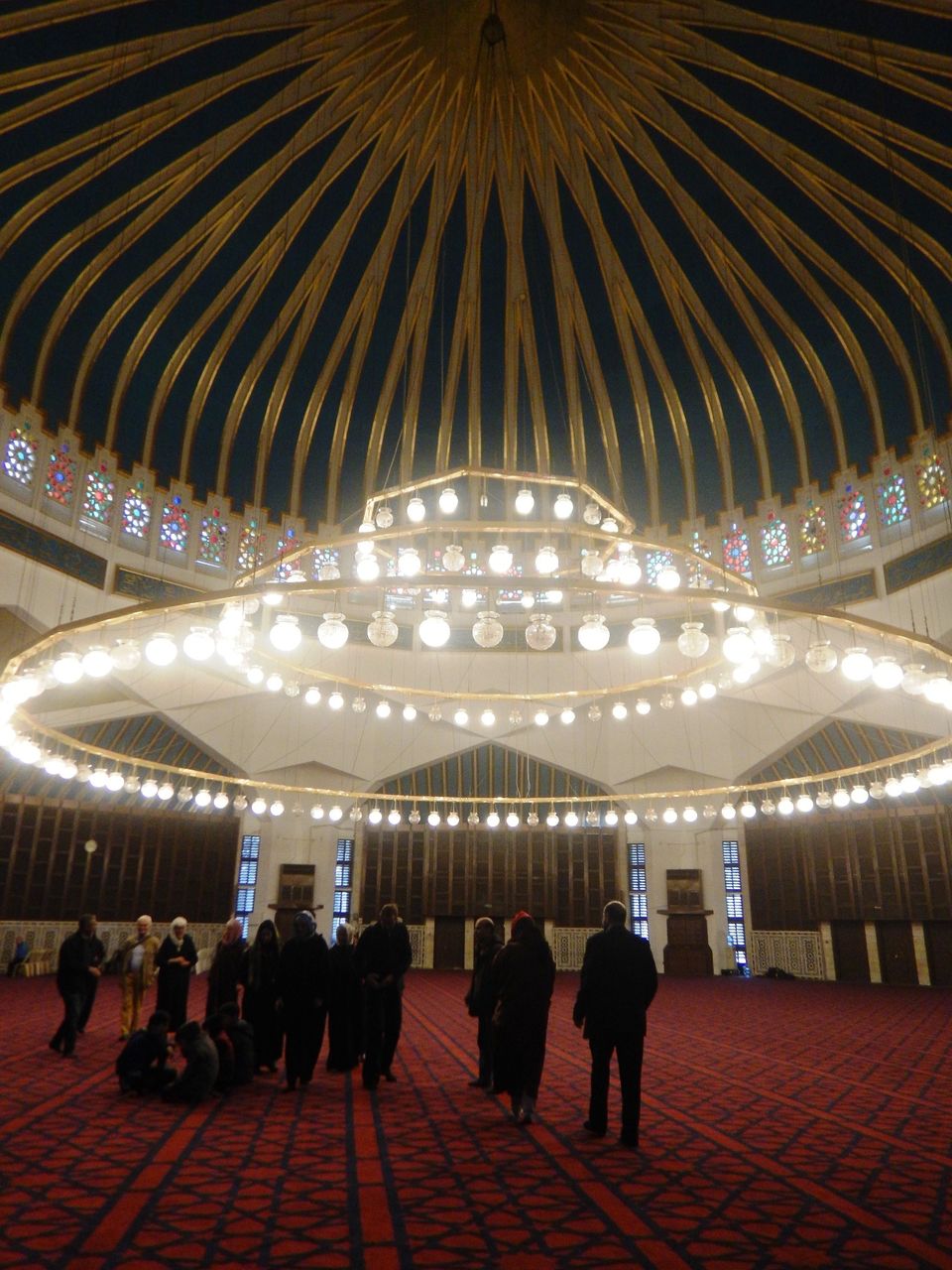
Rainbow Street and the Gold Souq are other tourist spots. We drove through Rainbow Street without stopping and bypassed the Gold Souq because we were pretty sure we didn't need more gold. My travel buddy’s a veggie so she feasted on falafel and hummos, while I enjoyed kababs and shawarma. I loved the taste of Umm Ali, the traditional Arabic sweet dish.


